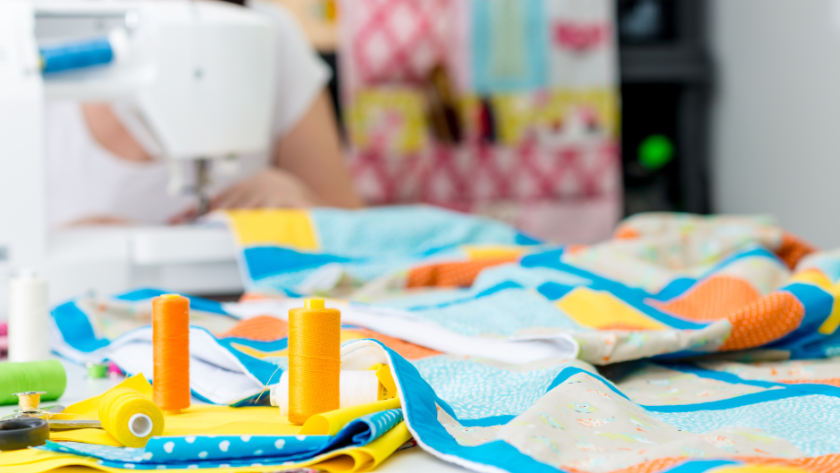Are you just considering getting into quilting and searching for the ideal project? There are many quilts that are undoubtedly simpler to assemble than others, and for beginners learning the basics of quilting, the options can be confusing.
There are many things to learn, but before you search for a quilting class near me, knowing the required materials, the quilting terms, and the basic techniques of quilting can be helpful.
This post will cover the quilting tools and materials that you will need to start your first quilting project.
Quilting tools and materials:
To head into the hobby of quilting may seem overwhelming in the beginning because of the materials and tools it requires. There are many quilting tools that are expensive. But the cost of the tools and materials shouldn’t be a demotivator as there are many alternatives that will cost you almost nothing to little. All it needs is to carefully select tools so that it helps to quilt better and is also easy to collect.
The list below will help you to start quilting without huge monetary commitments.
Fabric
Fabric can be the most important material when it comes to quilting. There are many types of fabrics, but quilting cotton is especially for quilting which is 100% cotton. Though it’s not necessary that you need to use quilting cotton for your first project, it’s recommended that you try to use woven cotton fabric.
Often fabric is the most expensive material for quilts, and there are so many awesome fabrics that will surely tempt you to have them all.
Though better-quality fabrics lead to better quilts, for your first few projects, you can go for cost-effective options.
Try to buy second-hand.
For a while, ignore the gorgeous fabrics out there, and look for second-hand fabrics.
Buy locally
Search in your local fabric shop, and you will get some ideas and can also pick some from there.
Use old clothes
You may even not buy any fabrics because you can use unused sheets, shirts, pillowcases, or anything that you are willing to cut and make a quilt with it.
Tools for measuring
Precision is an important factor when it comes to great quilting. Measuring tools can ensure precision. You can do the job with the following tools.
- Quilting ruler
There are various sizes available. However, a ruler that is 6.5 inches wide and long should be suitable in the beginning.
- Ruller and straightedge
It will help measure out and label your fabric so that you can cut it into smaller pieces.
Cutting tools
You may save some money in this section and work with your household cutting tools and scissors already available, but sharper tools are required to cut the fabrics. A rotary cutter is a specialized tool to cut the fabrics precisely.
- Matt and rotary cutter
It will help measure out and label your fabric so that you may cut it into smaller pieces is
- Marker and scissors
If you don’t want to buy a rotary cutter, you can work with a pair of scissors. To cut with scissors, you will need a marker to draw lines.
Basting tools
In order to keep everything in its proper location while you stitch the layers together, basting is the technique of temporarily attaching the layers in place.
Batting
Batting is the middle layer between the fabrics, which provides additional warmth. The most prevalent batting materials are cotton, polyester, poly-cotton blends, wool, and bamboo, which are available in most retailers.
You will also need safety pins to pin the three layers of a quilt. Basting spray that will work as an adhesive to keep the layers together. And some threads for basting.
Sewing and quilting tools
It’s time to stitch your fabric back together after it has been measured and cut. You use these tools when the interesting part of your quilting is just started. You can choose from two options for piecing. One is hand piecing, and the other is machine piecing. For hand piecing, you will need a needle and thread.
A variety of sizes and types of needles are available as well, but for beginners, it is advisable to purchase a variety pack so you can choose which is most comfortable for your hands. You could also decide to use a thimble when hand stitching to keep your fingertips.
And for machine piecing, you will need a sewing machine. Before spending some cash on a machine, try to borrow it from someone or a machine for a day so that you can be sure if you want to buy one.



